How to Create a Backup Power Kit at Home Without Installing a Generator
Power outages happen. Sometimes it’s a storm, sometimes the grid just fails. Either way, suddenly there’s no way to charge your phone, keep a light on, or run basic devices.
A backup power kit keeps you connected and comfortable when the lights go out. It’s not just about convenience. Sometimes you really need to make a call, check the news, or have a flashlight ready at night.
If you work from home or rely on your phone for updates, you know how fast a blackout can mess things up. A simple backup power kit gives you peace of mind. No noise, no complicated setup, no need to mess with fuel or permanent installations. Just grab what you need and go.
Power outages can happen anywhere. Having a kit means you’re prepared—not scrambling in the dark.
Why You Need a Backup Power Kit
What to Include in a Backup Power Kit
Before you buy anything, it helps to know what actually belongs in a backup power kit. The goal is to have what you need to stay safe, comfortable, and connected during any outage. You don’t have to buy every gadget on the market—just pick the items that cover the basics. This section breaks down the most important gear to include, so you’re ready for both short blackouts and longer emergencies.
Portable Power Stations & Power Banks
These are rechargeable batteries that can run phones, tablets, laptops, or even a small fan. Some have AC outlets, others just USB ports. Pick what fits your devices.
Solar Panels & Solar Chargers
When the outage lasts more than a day, you’ll need a way to recharge your gear. Foldable solar panels and USB solar chargers are quiet, safe, and don’t need fuel. Just set them in the sun and recharge your batteries.
Rechargeable Lights & Lanterns
Candles are risky. Rechargeable lanterns or USB-powered lights are safer, brighter, and easy to carry around. Some have hooks or magnets so you can use them hands-free.
Emergency Radios
These keep you connected when there’s no internet. Look for radios with hand-crank or solar charging. Some have built-in lights and phone charging ports.
Cables & Adapters
Make sure you have the right charging cables for your devices. A multi-USB cable or extra adapters can be a lifesaver.
Battery Organizers & Extra Rechargeable Batteries
For flashlights, radios, or other small gear, keep extra AA or AAA rechargeable batteries ready and stored in an organizer.
Put everything in one easy-to-carry box or bag. That way, when the power’s out, you don’t have to search for what you need.
How to Choose the Right Products
Not all backup gear is created equal. With so many options out there, it’s easy to get overwhelmed or end up with things that don’t really work for you. This section will help you focus on the details that matter most—like power, portability, and reliability—so you get equipment that fits your real needs and actually works when it counts.
Capacity & Output
Power Stations/Power Banks: Check how many devices you need to run and for how long.
Look at capacity (measured in mAh or Wh). Higher numbers mean longer runtime.
If you need to charge a laptop, make sure the power bank or station has enough output (wattage) and the right port.Lights: Pick lanterns and lights with enough brightness for your space.
Some models let you adjust brightness to save battery.
Portability & Storage
If it’s too heavy or bulky, you won’t want to move it in a hurry.
Choose gear that’s easy to carry or pack away.Foldable solar panels take up less space and are easy to set up.
Recharge Options
Power Banks: Can they recharge by wall, solar, or car?
Having more than one way to recharge is important, especially during long outages.Solar Chargers: Look for models that can charge directly from sunlight, even on cloudy days (it’ll just be slower).
Safety Features
Overcharge and short-circuit protection is a must for anything with a battery.
For lights, look for models that stay cool and are safe around kids and pets.
Other Details
Display Screens: Some power stations show remaining battery life and output. That makes planning easier.
Weather Resistance: Gear that’s water-resistant or rugged lasts longer if you need to use it outside.
👉🏻 Simple rule:
If you wouldn’t trust it to work in a storm, don’t put it in your kit. Stick to reliable brands and check reviews before buying.
How to Put It All Together
Once you’ve got your gear, it’s time to organize it. The last thing you want during a blackout is to dig around for a missing cable or dead flashlight. Here’s how to make your kit actually useful:
Storage and Organization
Pick a Box or Bag:
Use a sturdy plastic box, storage bin, or a soft-sided bag. It should be easy to carry and big enough for all your gear.Group Similar Items:
Keep cables together in a pouch. Put lights in one spot. Store extra batteries in a small organizer.Label Everything:
Use sticky notes or tape to mark what each charger or cable is for.
Label your power banks and lights so you remember which ones are fully charged.
Routine Checks & Maintenance
- Charge Everything Regularly:
Recharge power banks and lanterns at least once every 2–3 months.
Solar gear should be checked for dust and stored in a dry place. - Test Your Kit:
Try turning on every light, charging a phone, or tuning the emergency radio once in a while.
Replace any batteries that don’t hold a charge.
Instructions and Quick Tips
Make a Simple Instruction Sheet:
Write down how to use each item.
Tape this note inside your box or bag.
If someone else needs to use the kit, they’ll know what to do—even in the dark.Keep Everything Together:
Store your kit somewhere easy to grab. A hallway closet or under the bed works well.
Avoid tucking it away in a hard-to-reach spot.
👉🏻 Quick tip:
During a real emergency, you’ll thank yourself for keeping everything organized and charged. A well-packed kit is the difference between a minor inconvenience and a stressful scramble.
Tips for Using Your Backup Power Kit During an Outage
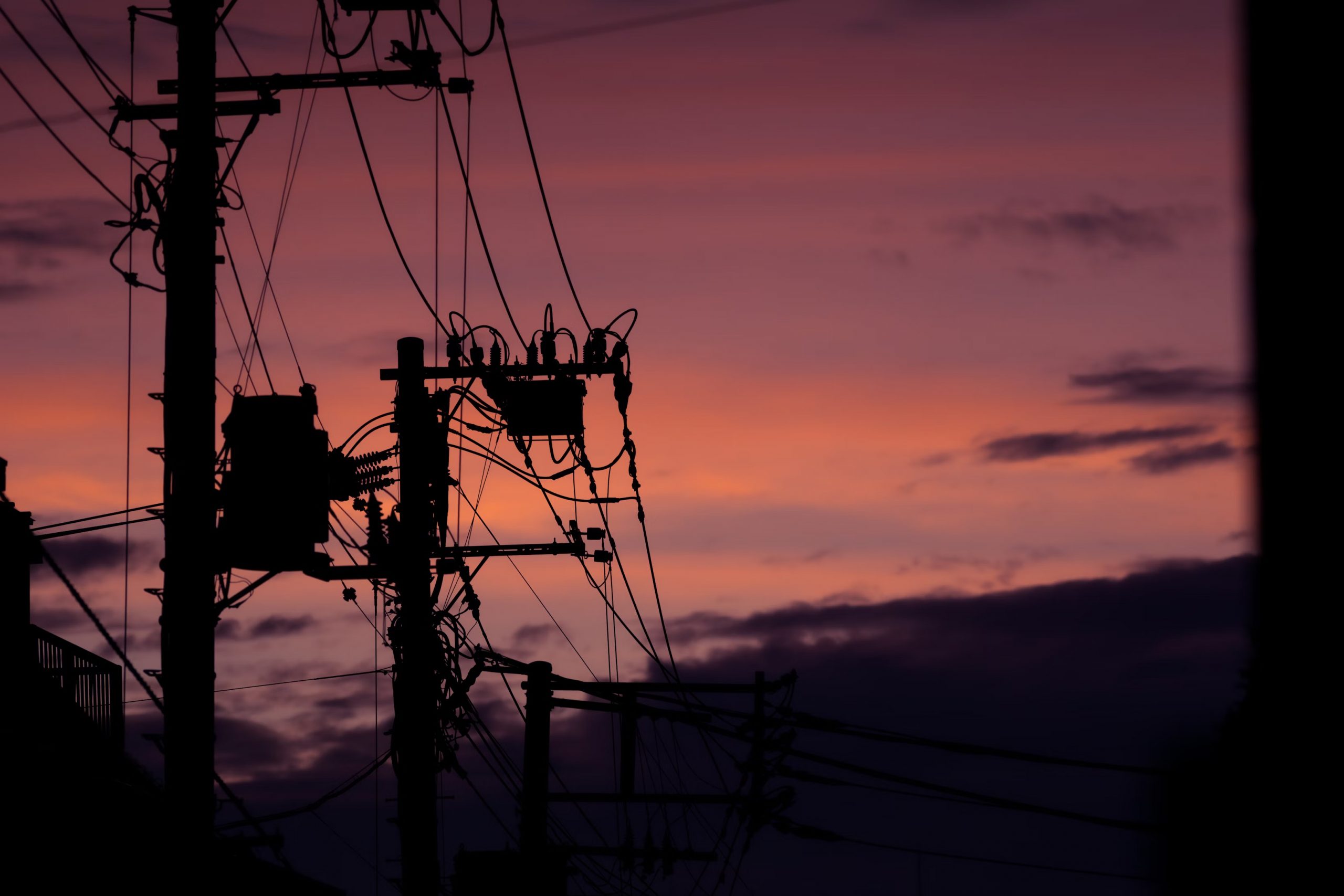
When the power goes out, a lot can run through your mind—what to charge first, how long your backup power will last, and how to keep things running smoothly until the lights come back. Here’s how to actually use your backup kit when you need it.
Start by powering what matters most.
Usually, this means your phone. It’s not just about calls and texts—your phone is also your flashlight, emergency alert system, and even a way to look up first aid or weather updates. Plug it into your power bank as soon as you notice the outage, especially if your battery is low. Turn on battery-saver mode and close any apps you don’t need to make it last longer.
Light only the spaces you’re using.
Rechargeable lanterns and USB lights are a safer choice than candles, and much easier to move around. Set up a lantern in the room you’re in, and bring a small light if you have to move through hallways or go outside. When you don’t need light, switch it off—this simple habit stretches battery life through the night.
Don’t overwork your backup station.
Portable power stations can handle phones, tablets, maybe a laptop or small fan. But they’re not made for big appliances or heaters. If you push them too hard, you risk draining the battery or tripping the unit’s safety features. Stick to essentials and skip anything that’s not absolutely necessary.
Keep communication lines open.
If the internet goes down, a hand-crank or solar radio can be a real lifeline. Tune in to local news and weather broadcasts, so you know what’s going on outside and when to expect the power back. Most emergency radios are simple to use—just extend the antenna, turn the dial, and listen.
Rotate and share charging time.
If several people need to charge their devices, take turns. Use a USB hub to charge more than one item, but remember, charging everything at once will empty the power bank quicker. Prioritize—phones first, then other essentials like a rechargeable flashlight or radio.
Be ready for minor issues.
Sometimes a device won’t charge because the cable is loose, or a port is dirty. If a light or radio won’t turn on, swap the batteries or plug it into a different charger. With solar panels, keep them angled towards the sun—even on cloudy days, you’ll get some charge, though it’ll be slower.
Stay calm and organized.
A well-packed backup kit means less stress. Take a moment to check what you have, where everything is, and which items have the most charge left. If you follow your own instructions (you did put a note in your kit, right?), you’ll find it much easier to get through the outage without any panic.
A backup power kit is about making a tough situation more manageable. When you use it thoughtfully, you keep your essentials running—and you keep your peace of mind.
Recommended Products
Setting up a backup power kit doesn’t have to be complicated, but the right gear makes a big difference. Here’s what you might want to include and why it’s useful:
Portable Power Stations and Power Banks
You don’t need a big generator to stay connected during a blackout. Portable power stations and power banks are compact battery packs that charge your phone, tablet, laptop, or even run small devices for hours. They’re quiet, don’t need fuel, and can be used indoors safely. The right one can keep your essentials running until the power comes back.
Jackery Explorer 300
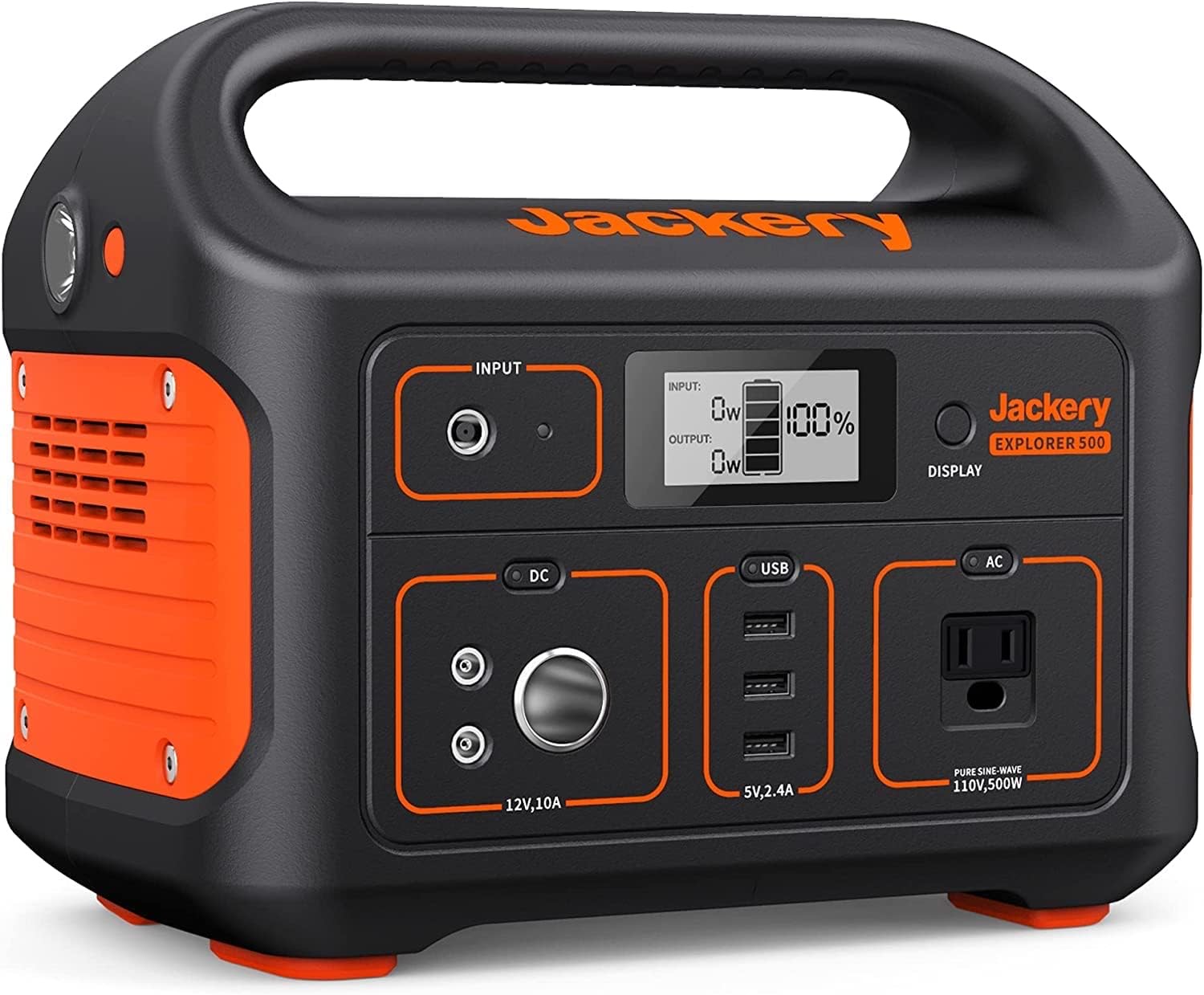
This is a compact, portable power station that can charge phones, tablets, a laptop, or even run a small fan or WiFi router for several hours. It has both AC outlets and USB ports. The built-in handle makes it easy to move, and there’s a clear display showing exactly how much power you have left.
If you want something simple that “just works” and don’t need to power big appliances, this is a solid choice.
Anker PowerCore 20100mAh Power Bank
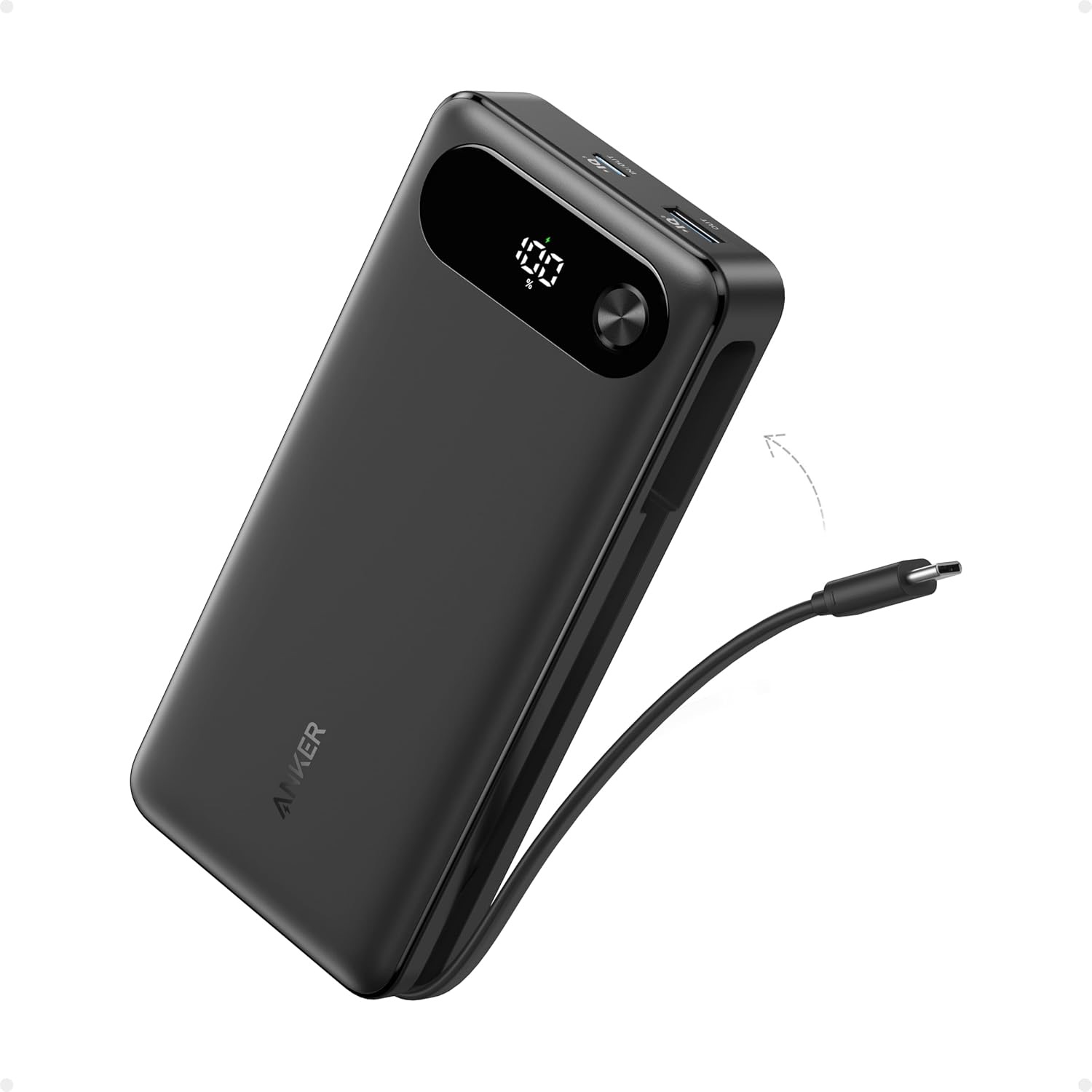
If you just want to keep phones and tablets going, this slim power bank is enough for most outages. It fits in your hand but can fully charge a phone several times. It’s light, charges quickly, and holds its charge well in storage.
Solar Panels and Solar Chargers
If the outage lasts longer than your battery supply, solar chargers step in. These lightweight panels turn sunlight into power, letting you recharge devices or power banks without the grid. They’re especially helpful during extended emergencies or if you live somewhere sunny. No gas, no noise—just free energy from the sun.
BigBlue 28W Solar Charger
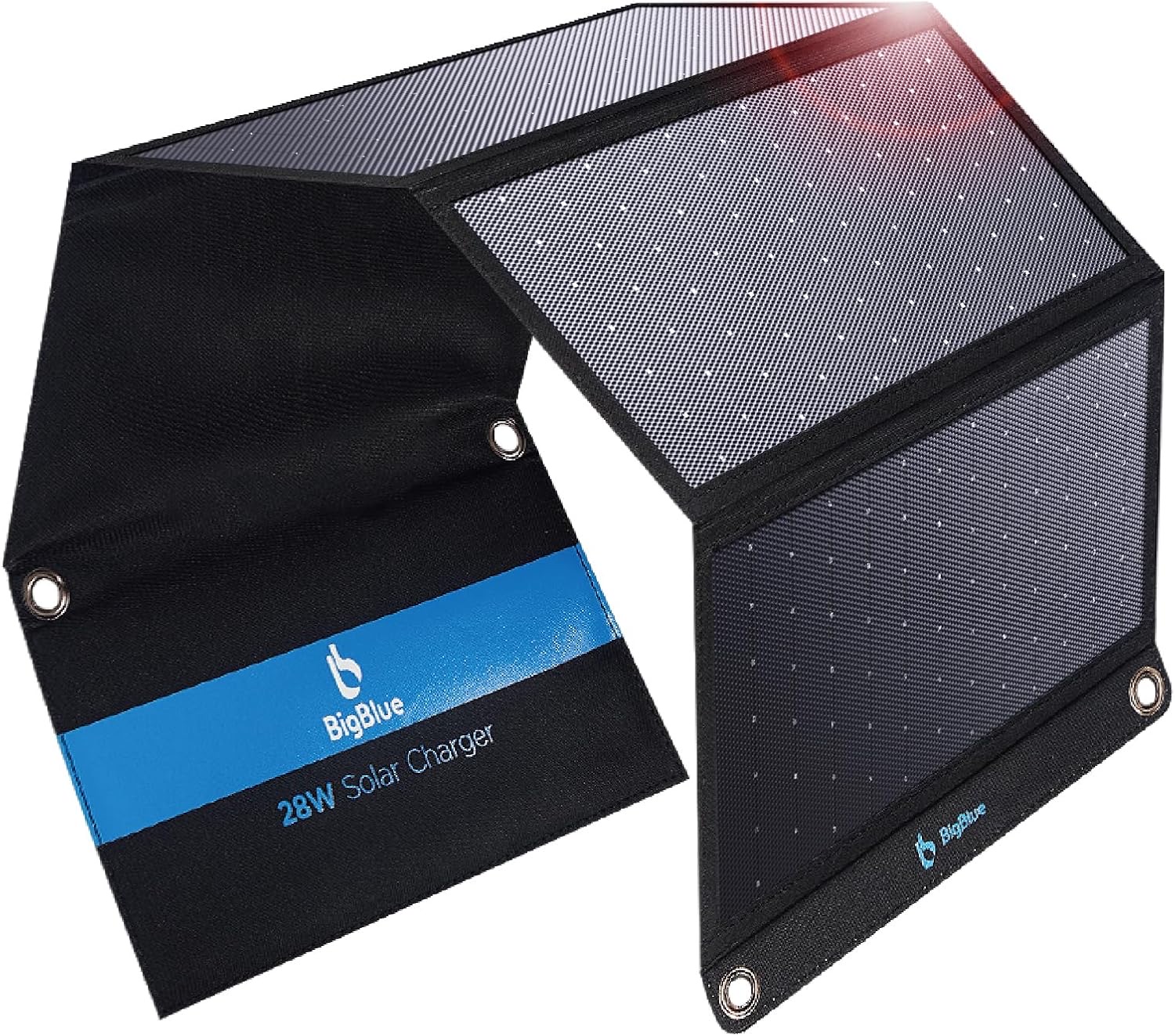
This foldable solar panel is about the size of a notebook when packed. It opens up to catch sunlight and can charge two phones at once directly through USB. It’s not heavy, and you can hang it from a window or backpack. In a long outage, it’s a reliable way to keep your phone or power bank charged, as long as you have sun.
Jackery SolarSaga 60W Panel
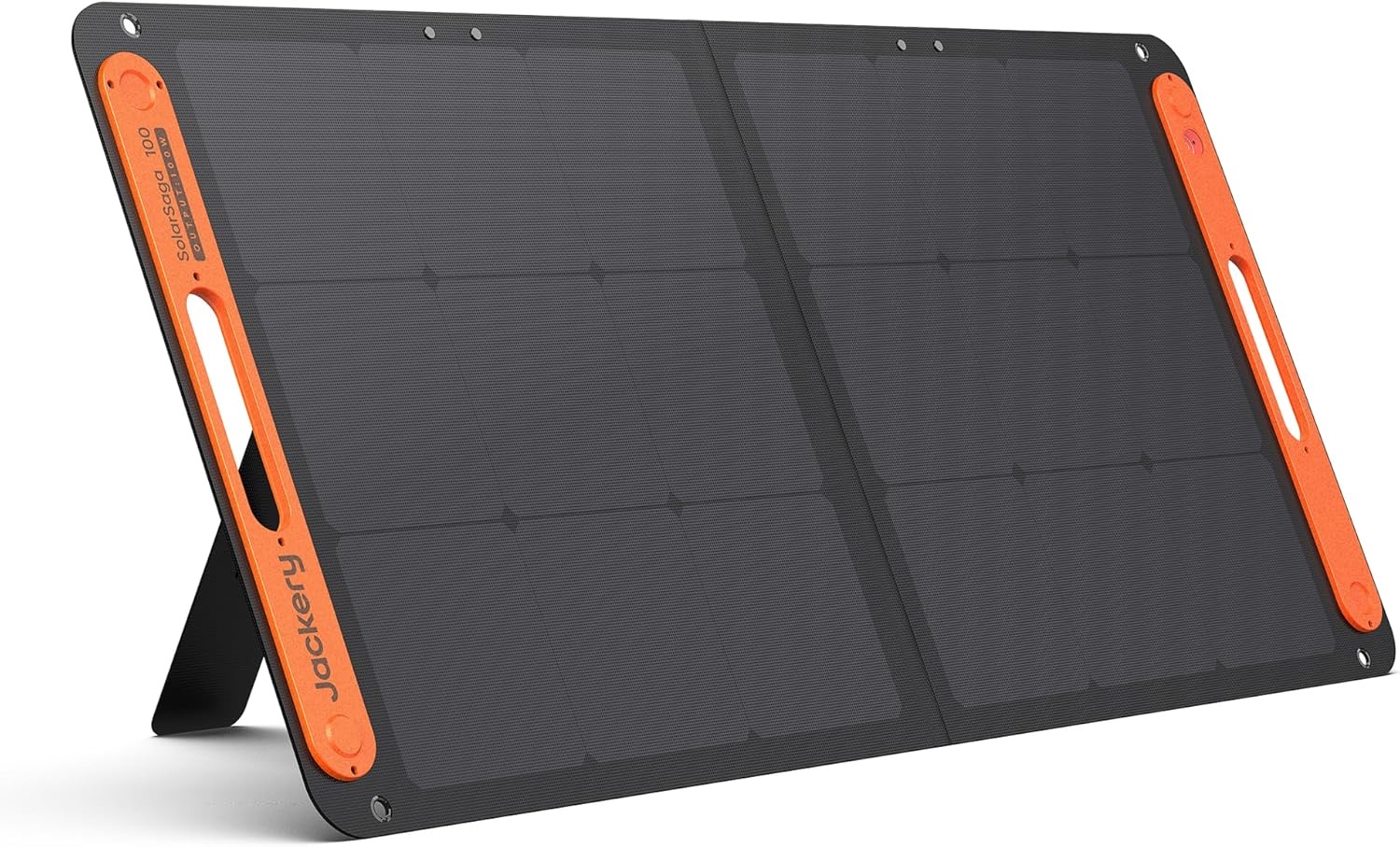
Designed to pair with the Jackery Explorer, but works for other devices too. It folds flat, is easy to carry, and charges power stations or USB gear when you’re off the grid. It’s a bit pricier but much more efficient than basic panels, and it can keep up with charging a power station during the day.
Rechargeable Lights and Lanterns
When the lights go out, safe and reliable lighting is essential. Rechargeable lanterns and lights are much safer than candles and can light up a room or hallway for hours. Many models are portable and easy to hang or stand anywhere. They take up little space in your kit but make a huge difference in comfort and safety during an outage.
Vont LED Lantern (2 Pack)
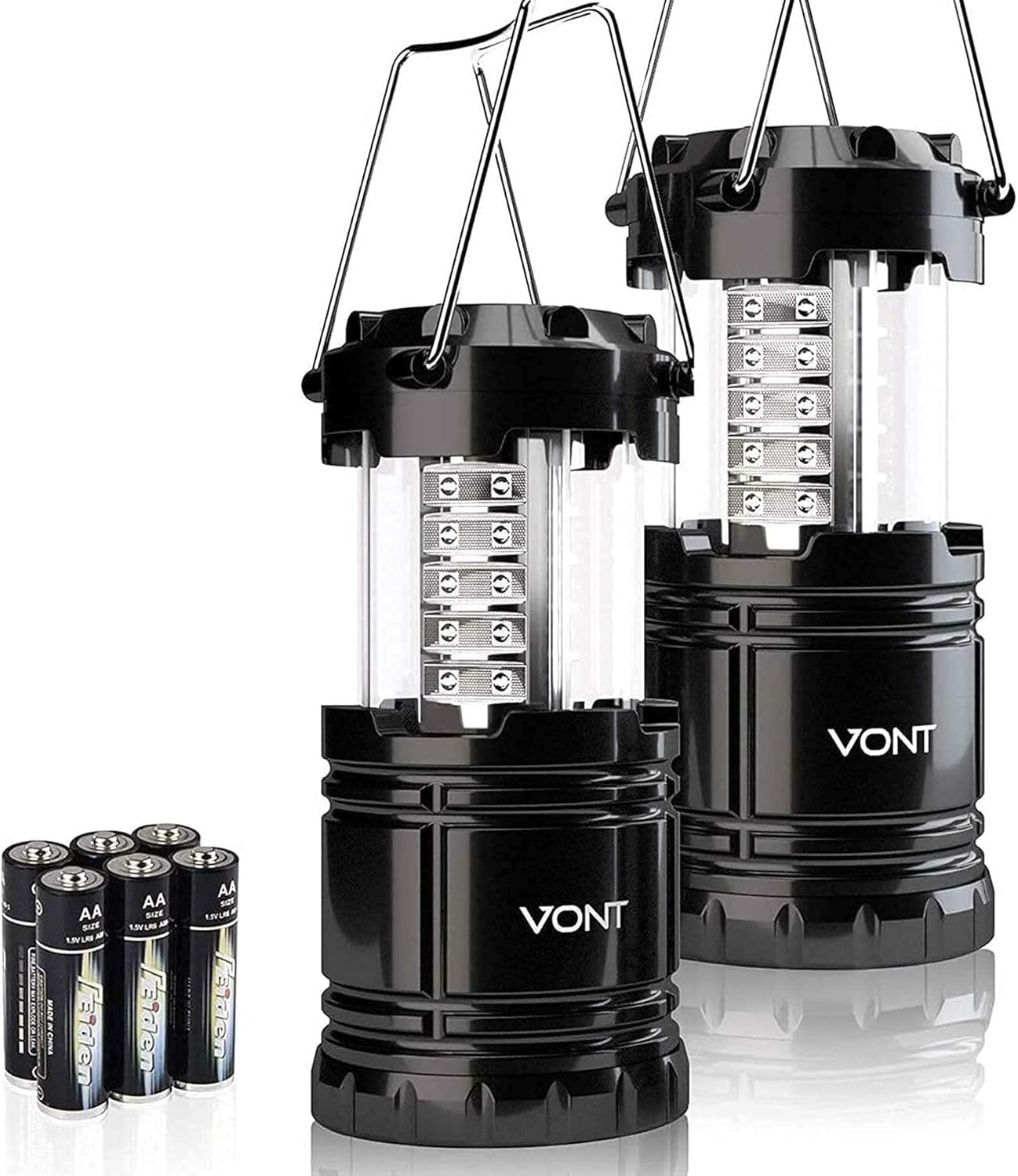
These lanterns are lightweight, bright, and run on AA batteries. You can collapse them to save space, and they’re tough enough to handle drops. They give enough light for a whole room and last for hours on one set of batteries. They’re also water-resistant, so you don’t need to worry about moisture.
LuminAID Solar Inflatable Lantern
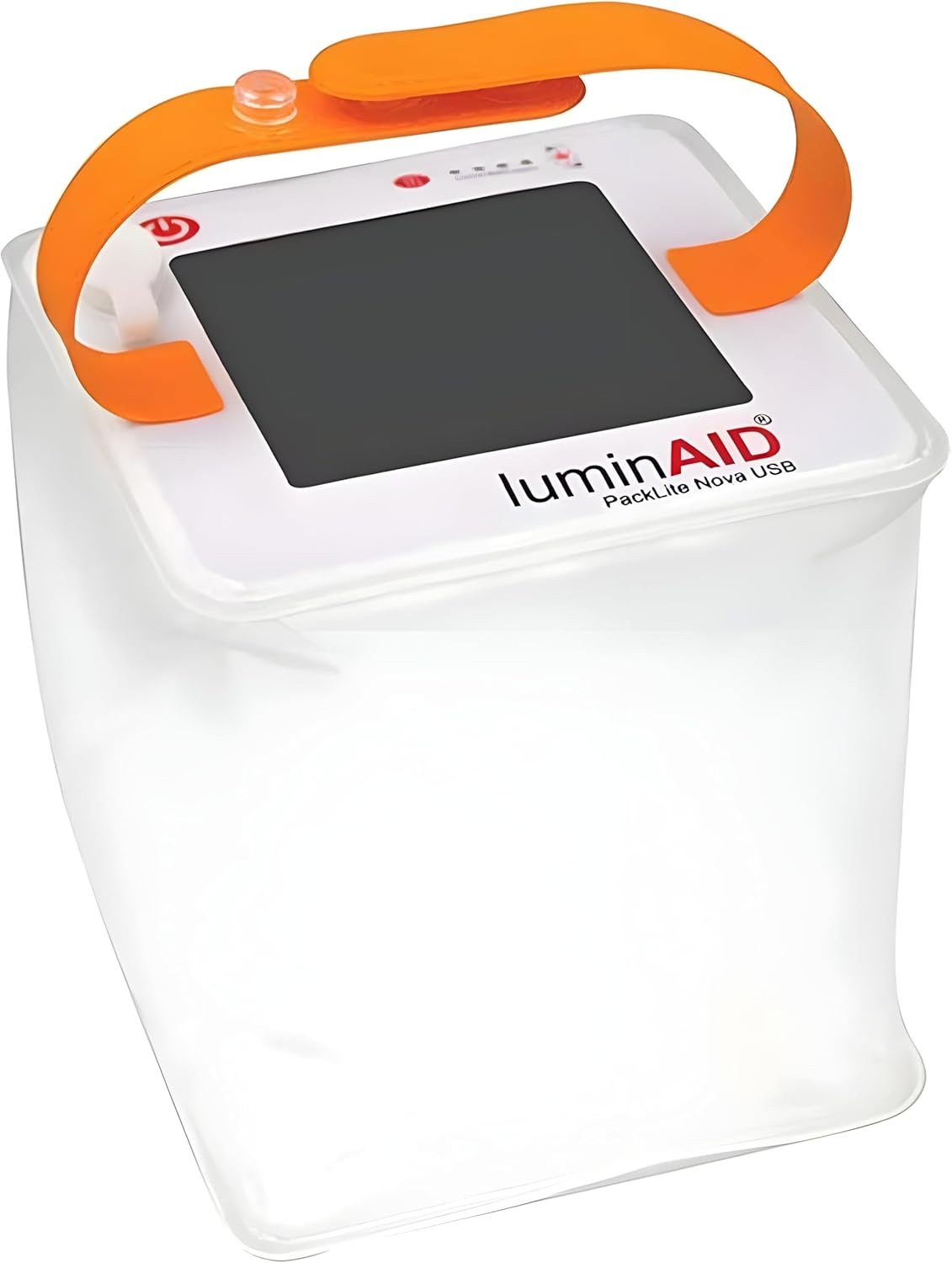
This lantern is inflatable (so it packs totally flat) and charges by solar or USB. It’s waterproof, floats, and works well inside or outside. One full charge gives you hours of light, and it’s perfect if you don’t want to deal with extra batteries.
Emergency Radios
Losing electricity often means losing access to news and weather alerts. Emergency radios are designed to work without regular batteries—they use solar power, a hand crank, or even charge from your power station. They help you stay informed, even if the internet is down or your phone dies.
FosPower Emergency Solar Hand Crank Radio
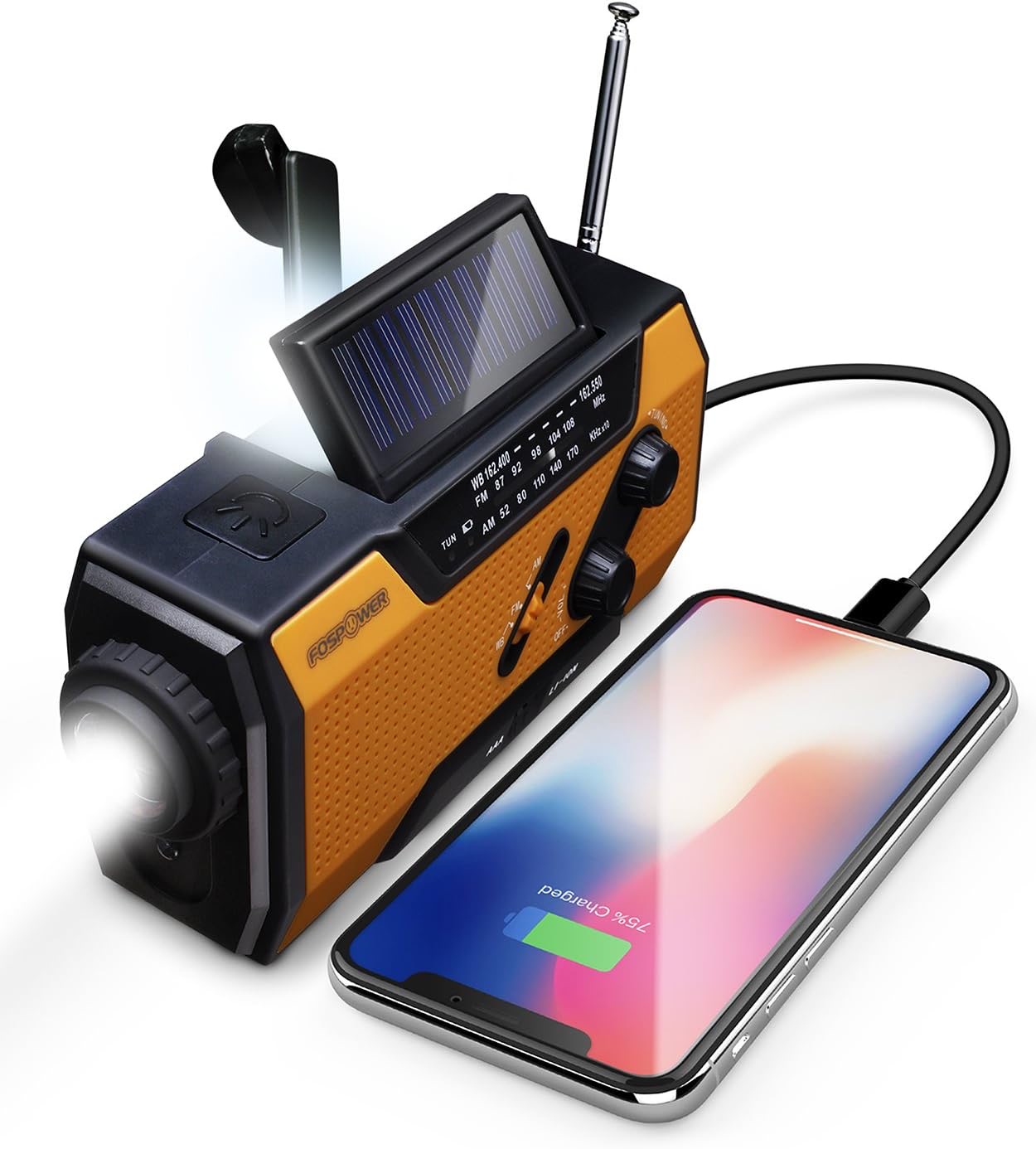
This radio covers all the bases: AM/FM and weather alerts, built-in flashlight, and a small USB power bank. You can recharge it by hand crank, solar, or regular USB. If your phone’s dead and you need news, it just works.
RunningSnail Emergency Hand Crank Radio
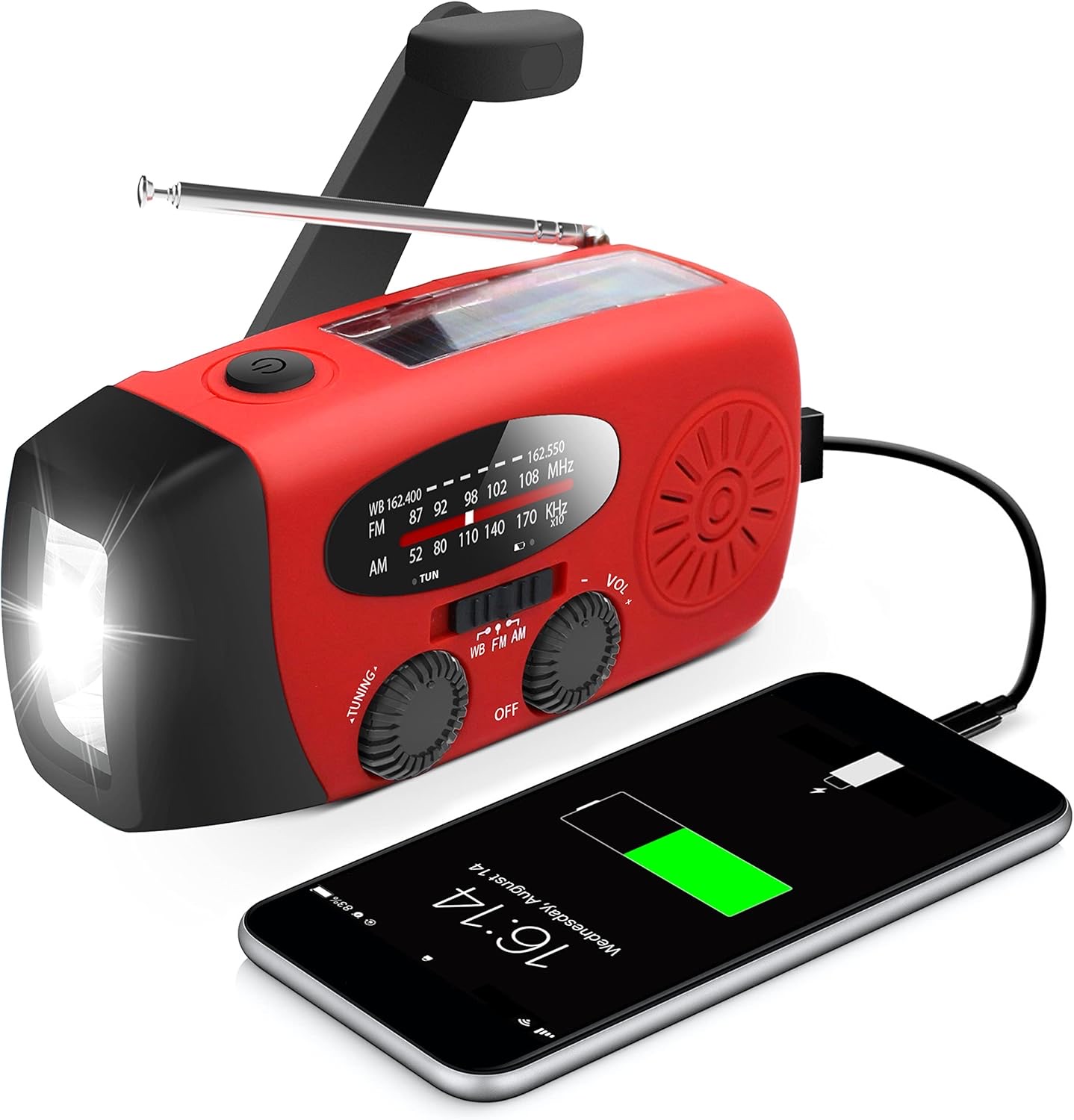
Another solid option with similar features: AM/FM/NOAA radio, flashlight, and power bank. It’s easy to use, fits in one hand, and keeps you informed even if the outage lasts.
Cables, Adapters, and Spare Batteries
Every backup kit needs the right accessories to tie everything together. Extra charging cables, adapters, and a supply of rechargeable batteries keep all your devices powered and running. A few spare batteries and a good cable can turn a kit from just okay into something that covers all the bases.
Anker Powerline Multi-USB Cable
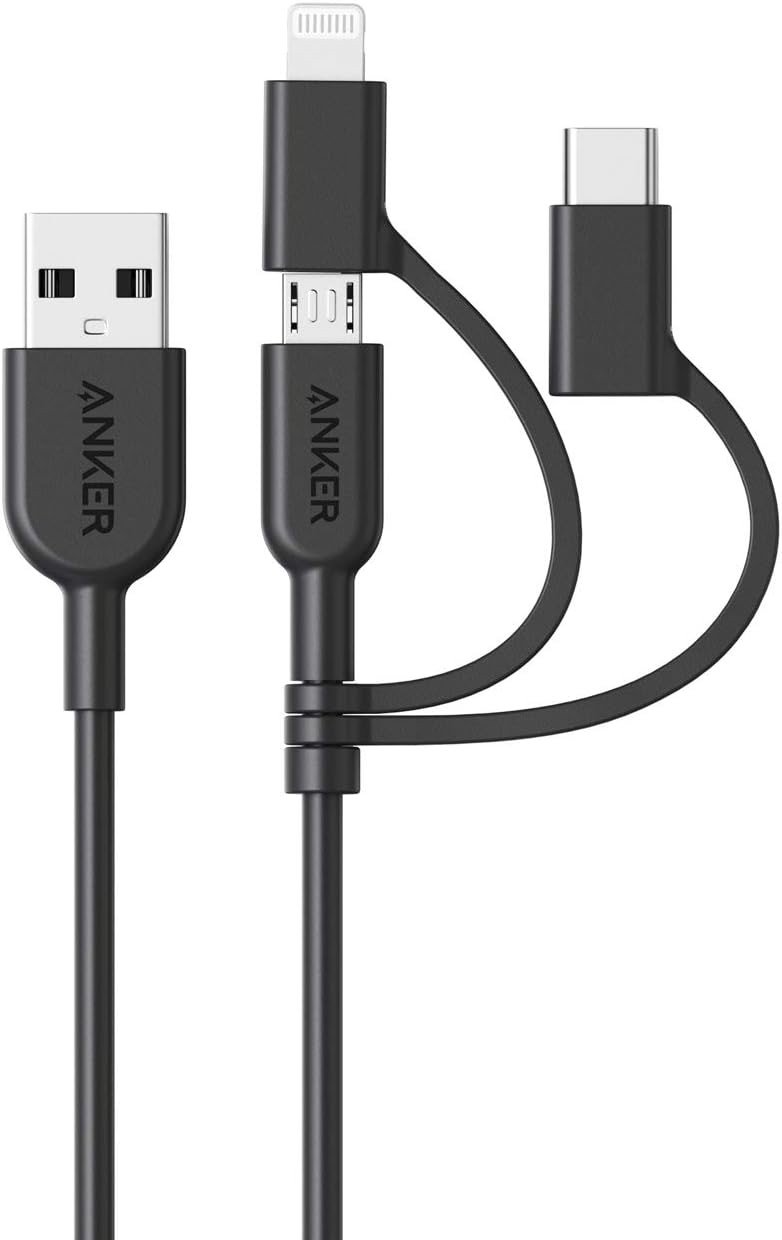
This cable has multiple connectors—USB-C, Micro-USB, and Lightning. It’s durable and lets you charge different devices without carrying a tangle of cables. Good for families or anyone with mixed devices.
Energizer Recharge Universal Batteries
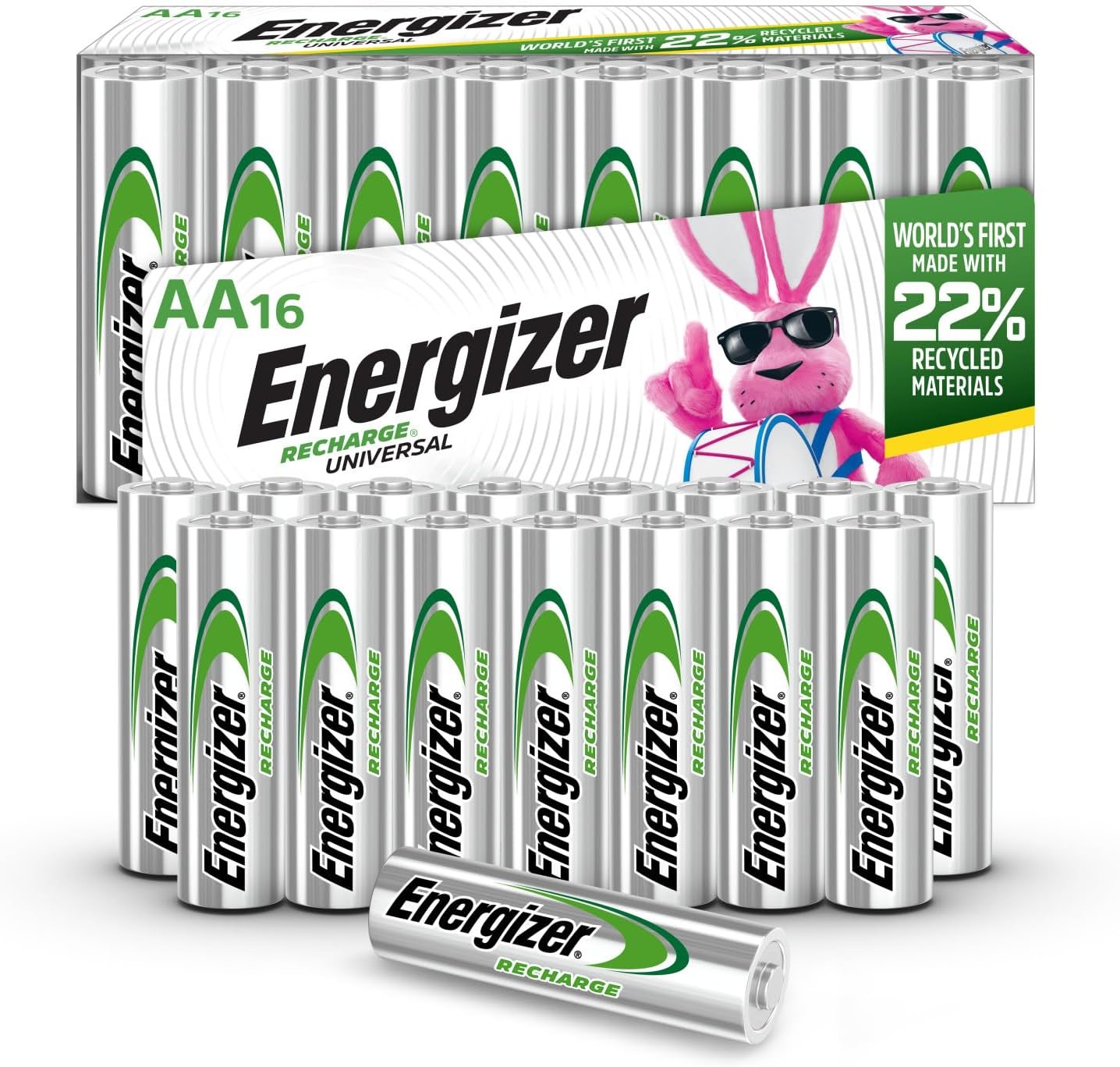
Another solid option with similar features: AM/FM/NOAA radio, flashlight, and power bank. It’s easy to use, fits in one hand, and keeps you informed even if the outage lasts.
All these items are widely available, have plenty of real-world reviews, and are known to be reliable. Pick the ones that fit your home and needs best.
FAQ
Do I need both a power station and a power bank?
Not always. If you just want to keep your phone and a few small devices running, a power bank is usually enough. If you want to power a laptop, router, or several devices at once, a portable power station is a better fit.
How long will a power bank or station last during an outage?
It depends on the size (capacity) and what you’re charging. Most power banks can charge a smartphone 2–6 times. A small power station can run a phone, tablet, and small light for a full day or more. Check the product’s specs for estimated runtimes.
Can I use my power kit indoors?
Yes. Unlike gas generators, power banks and stations are safe for indoor use. There’s no noise or fumes. The same goes for solar panels, though they need sunlight, so place them by a window or outside.
How often should I recharge my backup kit?
Every 2–3 months is a good habit. Batteries slowly lose charge, even when not used. Top them up regularly, and test your lights and radios so everything is ready when you need it.
Are solar panels hard to use?
Not really. Most portable solar chargers unfold and plug straight into your device or power bank via USB. They work best in direct sun but can charge (slowly) on cloudy days too.
What’s the best way to store everything?
Use a sturdy bin or soft bag, and keep everything together in a spot that’s easy to reach. Label your cables, group similar items, and keep an instruction note inside for quick reference.
What if I have a large family?
Consider a bigger power station or a second power bank. Also, add more lights and cables so everyone can charge their devices and move around safely.
Do I need to buy everything at once?
No. Start with the basics—a power bank, a light, and a radio—and add more over time. Focus on what you really need first.
Final Thoughts
Nobody plans for the power to go out, but it happens—to everyone, and often when it’s least convenient. Having a backup power kit at home isn’t about being paranoid. It’s just practical. When you’re prepared, you turn a blackout from a stressful event into a minor inconvenience.
Why a Backup Power Kit Makes Sense
Keeps You Connected: Your phone is your lifeline for information, contact, and even emergencies. With backup power, you’re never completely cut off.
Lights When You Need Them: Stumbling around in the dark is more than annoying—it can be dangerous. Rechargeable lanterns and lights let you move around safely and keep your household comfortable.
Stays Safe Indoors: Unlike gas generators, power banks, solar chargers, and portable lights are completely safe to use indoors—no fumes, no noise, and no risk of fire from candles.
Flexible for Every Home: Whether you live in a city apartment or a rural house, a backup kit is easy to store, doesn’t take much space, and can be customized for your needs.
Key Points to Remember
Start Simple: Even just a good power bank, a lantern, and a basic radio is enough for most short outages. You can build up your kit over time.
Recharge Regularly: Every couple of months, top up your batteries and check your lights and radios. It only takes a few minutes, and you’ll always be ready.
Choose Quality: Go for products with real reviews and a reputation for reliability. Saving a few dollars on off-brand gear isn’t worth it if it fails when you need it most.
Keep It Together: Store your kit in a spot everyone can reach, with everything labeled. If someone else in your home needs to use it, clear instructions make life easier.
Solar Is Your Friend: If you live somewhere sunny or want to be ready for longer outages, a solar panel is a smart, quiet way to keep your devices powered up.
Other Useful Tips
Make a Checklist: Write down what’s in your kit and when you last charged everything. This helps with routine checks and keeps you organized.
Teach Everyone in Your Home: Show family members or housemates where the kit is and how to use it. Even kids can safely use most lanterns or radios.
Have Extras Ready: A few spare batteries or cables don’t take up much space, but they can make a huge difference if something gets lost or stops working.
Stay Calm in a Blackout: With your kit ready, you can focus on more important things—like staying comfortable, checking in on neighbors, or just relaxing until the power comes back.
You don’t need to wait for a big storm or disaster to get ready. Setting up a backup power kit now means you’re prepared for anything, with no rush, no last-minute shopping, and no panic when the lights go out.
It’s about peace of mind, safety, and making sure you and your loved ones can handle whatever comes your way.
So, take a little time, put your kit together, and you’ll thank yourself the next time the power fails.
